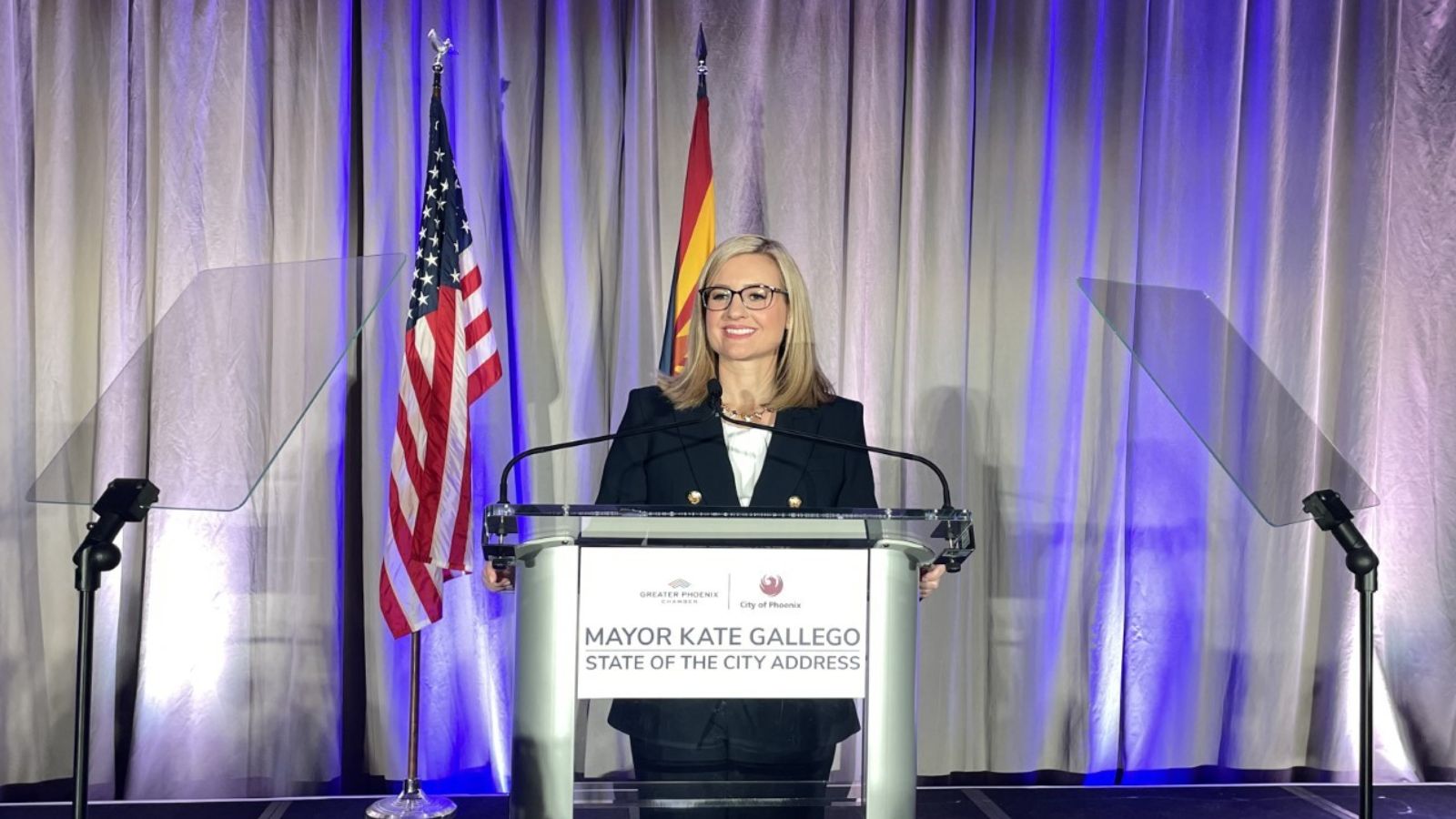‘Where all the kids are above average’: Should schools separate gifted students?
Jun 21, 2014, 2:30 PM | Updated: Jun 22, 2014, 8:53 am
The debate over gifted education, which has smoldered for generations, flared again this month when incoming New York Education Commissioner Carman Fariña signaled at a town hall meeting that the city may dial back separate gifted programs in favor of personalized and more challenging curriculum for all kids in every class.
Advocates call Fariña's model the “differentiated classroom.” With the right structure, they argue, one teacher can accelerate learning for the highly gifted in an integrated classroom — without separating them from others or slighting those who lag behind.
Differentiated instruction as an alternative to gifted programs is not a new idea. The approach is widely embraced around the country, and it is widely viewed as a way of blending kids rather than isolating them, while making limited classroom resources reach further.
But not everyone thinks differentiation can serve students across all needs and ability groupings. Critics are reminded of radio host Garrison Keillor’s improbable Lake Woebegone, where “all of the children are above average.”
It’s a new take on the old American conflict between equality and opportunity. If the goal is to make sure no child is left behind, how can schools also be helping others to get ahead?
The differentiated classroom
The differentiated classroom hearkens back to the rural one-room schoolhouse of American history, where different ages and abilities forced schools to tailor to students needs.
The modern form of the idea also owes much to disability law, which led to mainstreaming of mildly or even significantly handicapped students, requiring teachers to reach to one extreme of learning capacity and speed.
In an ideal differentiated classroom, curriculum is tailored to student’s skills, small group work is common and so is individualized work. Students who move faster are given enrichment materials or pushed forward, while the teacher gives extra help to those lagging behind.
Adding highly gifted students into that mix doesn’t really change the theory, but it does force teachers to stretch ever further to provide the ideal push for differing skill levels.
Fariña’s vision for New York is to give every child personalized and challenging opportunities, and she thinks the differentiated classroom can do it.
“My children did not go to gifted and talented [programs], and I think they had wonderful educations because their teachers taught all the kids in that class to the highest level,” Fariña told a parent group in Queens earlier this year, Chalkbeat reported.
Fariña aims to bring to play the theories — and efforts — of Joseph Renzulli and Sally M. Reis, the Connecticut-based creators of the Schoolwide Enrichment Model, the most widely known expression of the differentiated classroom approach.
The Renzulli SEM model of applying gifted principles to the school at large has an enthusiastic following in education reform circles, and a handful of New York public schools have formally embraced it.
“A Renzulli School,” proclaims Bell Academy, a public school in Queens, on its website, “focuses on the development of all students' unique profile of gifts and talents.”
“Learning is project-based, and students are encouraged to use the independent investigative method of research learning,” Bell Academy’s website states. “The school culture celebrates individuality, creativity and diversity to develop creative problem-solvers who feel they can make a difference in the world.”
Segregating students
Critics of gifted education focus in part on its segregating impact on the classroom, claiming that nominal diversity in the school itself is often upended by segregation in the gifted program.
Last year the New York Times took a close look at New York’s P.S. 163, where 63 percent of the students were black or Hispanic, with 33 percent white or Asian. But in the nine gifted classrooms, the Times found, 62 percent were white or Asian.
Those numbers are typical citywide, said Halley Potter, a policy analyst at the Century Foundation.
“What you get is general education classes that look very different from the gifted classroom in racial/ethnic and economic breakdown,” Potter said. “You have schools that look like they are diverse, but in fact they are heavily segregated through the gifted program along racial and economic divides.”
Advocates of the Renzulli approach point to that racial and ethnic divide, arguing that socio-economic advantages give better-off preschoolers a testing advantage that is compounded by gifted programs.
Rick Hess, director of Education Policy Studies at the American Enterprise Institute, sees the demographic divide through the reverse lens.
“Some of the kids worst served by this are at-risk, low-income kids with a lot of talent but who are stuck in schools that are doing everything they can to get kids over a minimal bar,” Hess said. These poorer gifted kids, Hess argues, will never get the advantages at home that wealthier kids have. If the school cannot push them forward, they will get lost in the flow.
Chester Finn, president of the Thomas B. Fordham Institute, likewise argues it's possible to shape gifted programs in creative ways to address the socioeconomic segregation problem. He says he is open to flexible formulas that ensure more minorities and underprivileged are drawn into gifted programs.
Unintended consequences
One of the more unseemly sides of the gifted regime, critics argue, is the spectacle of parents who drill their children, often hiring tutoring services for children as young as 4 and 5 years old. The thought of toddlers cramming for high-stakes exams to get into gifted programs, coached by parents and even for-profit test prep services, does not sit well with many educators.
While this kind of gamesmanship is common in competitive schools, such as those that pepper New York City, the promise of the differentiated classroom is that it will help diffuse, to a large degree, the battle for placement at young age.
Commercial outfits such as Bright Kids, a for-profit test-preparation service, have filled the niche for parents anxious to push their kids into New York’s gifted and talented programs. While Bright Kids offers a variety of services, they make no bones about their primary purpose. On the Bright Kids website, the “services” tab leads with “test prep,” which opens in turn to “Pre-K” and “Kindergarten.”
Even Hess, a strong defender of gifted education, sees the test prep mania in New York as unseemly.
“Of course, it’s a problem,” Hess said, “but it’s a problem pretty isolated to New York. It does not affect gifted education programs in middle America.”
No system, Hess argues, is without foibles. And he says that, on balance, gifted programs serve an indispensable role in empowering bright kids whose families would lack the resources to push them onward.
Hess and Finn both see gifted programs as indispensable. For the last 15 years, they argue, the public school regime has been so heavily focused on testing to raise the lowest student performance that kids who move further faster are simply taken for granted.
One problem, Hess argues, is that areas in which bright kids need to grow, like music or science, are not always the things that are easily measured, like reading and math.
“A testing regime that is so focused on reading and math performance tends to distract attention from other talents that are important to the children, but also very important for our nation,” Hess said.
In a traditional classroom, he argued, the focus tilts heavily toward testing and accountability on the core-tested subjects. “It makes sense to at least create a haven where these kids can develop their gifts, rather than asking them to be patient in classrooms that are not geared to developing their talents.”
Resource demands
Potter acknowledges that the Renzulli approach — the differentiated classroom — may not be not easy to pull off. At the very least, she says, to do it properly teachers would need more resources and probably smaller class sizes.
But where resources are scarce, skeptics argue, teachers will have to make choices about how to spend their time and gifted kids will be left to drift.
“Of course, teachers should try to customize what different children need,” said Chester Finn, president of the Ohio-based Fordham Institute. But Finn is skeptical that teachers can effectively personalize instruction across enormous ability ranges. “When I taught social sciences, I had 150 kids. There was no way I was going to customize day in and day out around even 30 kids, let alone 100.”
Finn remains deeply skeptical that a differentiated classroom can address the needs of students of all skill levels without leading an exhausted teacher to focus on the middle segment.
And, Hess says, he knows whereof he speaks on the matter. “I failed out of AP calculus in high school,” he says. “If that teacher had held it up the class until I got it the rest of the class would have been harmed.”
Correction: The quote from Rick hess about failing AP calculus was originally mistakenly attributed to someone else.
Email: eschulzke@desnews.com![]()








